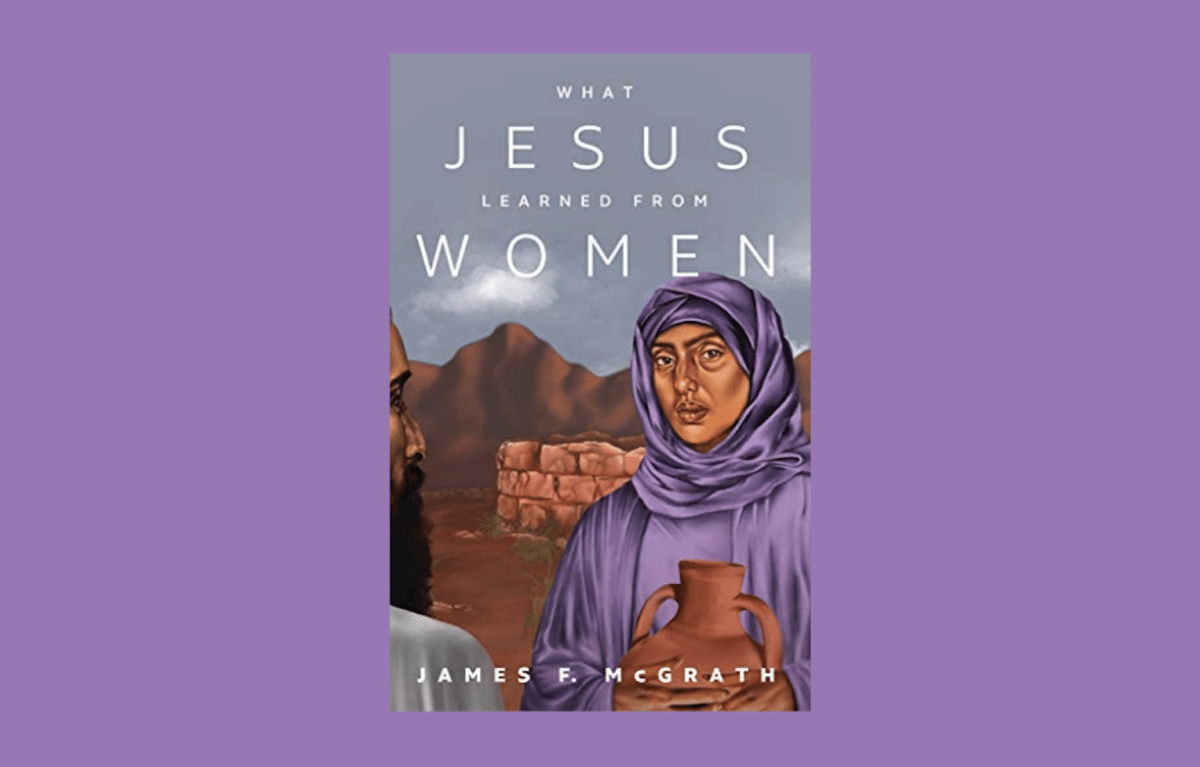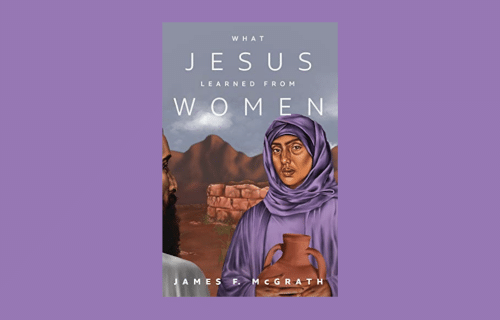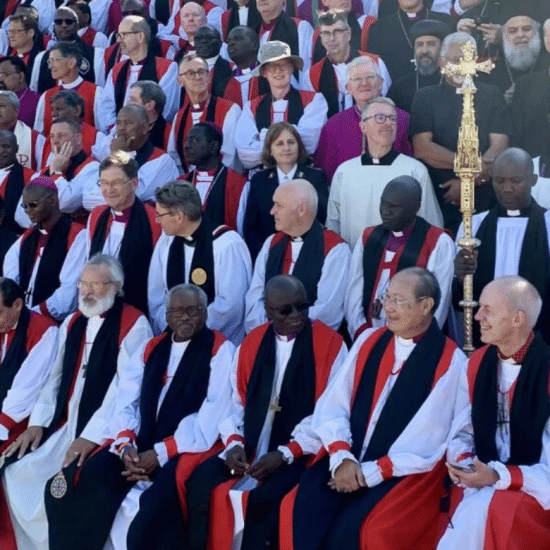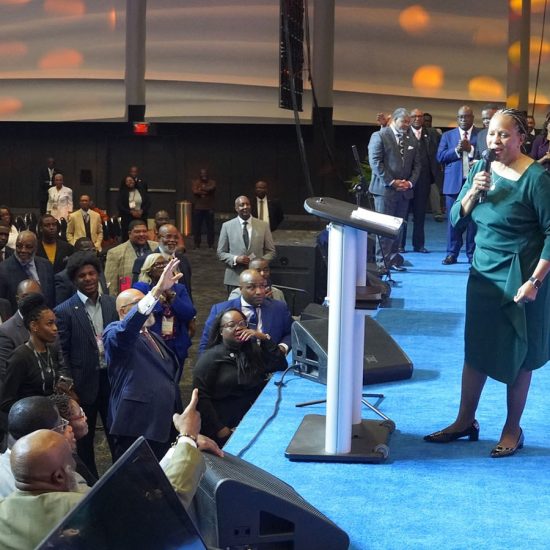

WHAT JESUS LEARNED FROM WOMEN. By James F. McGrath. Eugene, OR: Cascade Books, 2021. X + 311 pages.
For those of us who affirm the Chalcedonian decree, which proclaims that Jesus is fully divine and fully human, we must answer the question as to what it means for Jesus to be fully human. Theologians down through the ages have wrestled with that question. It’s one thing to affirm a creedal statement, it’s another to define one’s terms. So, when it comes to Jesus’s humanity, did he have to learn as we learn? Or did he know everything there is to know because he’s divine? You might think here in terms of Mr. Data who enjoyed an encyclopedic set of information. Thus, for Jesus, he had such knowledge from the moment of conception. Of course, there is an intriguing reference in the Gospel of Luke that suggests that as a child Jesus grew in wisdom and stature. I’ve long taken that as a signal that Jesus didn’t know everything there is to know from conception. Instead, he had to learn things just as we do. So, when he went to school (bear with me for a moment), did he have to learn his times’ tables as I did in fourth grade? Or did he get a perfect score on every test?

Robert D. Cornwall
While you ponder that question, I’d like to point your attention to James McGrath’s intriguing and insightful book titled What Jesus Learned from Women. McGrath is the Clarence L. Goodwin Chair in New Testament Language and Literature at Butler University. He’s written several other books that range from New Testament studies to Dr. Who. He is also a noted blogger.
Returning to the title of the book, notice that McGrath uses the phrase “learned from” and not “taught.” That’s an important distinction because it allows McGrath to expand the conversation to include encounters with women who might not have explicitly taught him something, but whose example might have given Jesus new insights about God, humanity, and creation. Thus, if one is going to embrace the thesis of this book from a Chalcedonian perspective, one also has to accept the idea that divinity does not preclude learning. That might make me a Nestorian, but I find the concept compelling.
When it comes to the role of women in the biblical story, there is an increasing number of excellent books being published. One of the challenges for those who are exploring the role of women is the fact that many of the women mentioned in the Bible are not named. This is especially true of the New Testament. Those who are named may not have their character fully developed. That may be due in large part to the fact that the biblical text was written by men living in a patriarchal age that tended to discount the role of women in society. Nevertheless, there are hints that Jesus did learn from women, and so should we.
Now, it takes a bit of intuiting and sleuthing to provide a fuller picture of the lives and roles of women in the Gospel story. That is what McGrath does here. He begins with the premise that Jesus did learn things and that he learned from the women in his life. So, what might he have learned? In answering this question, McGrath employs a methodology that draws on both historical and literary resources. Doing this gives him the ability to fill in gaps that historical study by itself cannot penetrate. In fact, he seeks to engage in the “exegesis of silence.” This methodology requires the use of one’s imagination as well as an understanding of history. McGrath writes that this method “seeks to take the evidence fully seriously and be compatible with it, and yet by definition is required to go beyond it, to explore silences and omissions and details around passing mentions” (p. 12). One of the ways he does this is through the use of story and historical fiction in particular.
So, McGrath takes us on a journey that begins with his mother, Mary, and concludes with a conversation about one of Jesus’s companions, a woman named Joanna, who was numbered among the women at the cross. It does make sense to begin a story of women from whom Jesus learned with his mother. She would have been the person most likely to form his worldview since mothers were often the primary educators of their children. But McGrath doesn’t stop with Mary. He takes us from Jesus’s mother to the house of his Grandmother, who McGrath envisions living in the neighboring city of Sepphoris. He finds evidence that might be a bit circumstantial, but which suggests that his grandparents, Mary’s parents, might have lived in Sepphoris. If his father worked in Sepphoris, as many scholars have suggested, then might he have accompanied Joseph to the city and spent time with his grandparents? If so, what would he have learned from his grandmother about cities and urban life and living among gentiles? Now the Gospels say nothing about such encounters, but they can be imagined. Not only that but stories that emerged over time might not have made it into the Gospels but are suggestive of such a person who might have lived in just this place.
The chapters on Mary and Anna are only the beginning because McGrath takes us to other occasions where Jesus seems to have learned from women, starting with the Samaritan woman Jesus met at a well, a woman with whom Jesus had a serious theological conversation. Then there is the encounter with the Syro-Phoenician woman, who challenges Jesus’ ethnocentrism. There is a chapter about two women who suffer, one older and one younger, both of whom Jesus heals. We encounter Mary and Martha and what these two women taught him. There is a poor widow who shared her two cents with the temple and what that might have meant. He addresses the story of the woman who is presumed guilty of adultery in John 8, a passage that has been disputed, but which I’ve always felt, and McGrath confirms, may not belong to John but seems to fit the story of Jesus. So, what did he learn from this experience?
You can’t write a book about the women around Jesus and not discuss Mary Magdalene. McGrath does an excellent job of separating out the various interpretations, many of which conflate a variety of women into one composite picture. With this in mind, he addresses the idea that Mary was a prostitute. He engages with one of the more popular contemporary suggestions that Mary Magdalene was Jesus as Jesus’s lover or wife or bearer of his children. It’s a staple of popular culture, whether in Jesus Christ Superstar or the DaVinci Code. McGrath notes why these are popular, but he raises other possibilities that might be more realistic. One of the questions he raises concerns why we always assume that Mary is a younger woman. What if she is an older woman who simply brings wisdom and possibly financial support to the community? We can’t nail any of this down, but we might want to broaden our horizons. Whether young or old, most importantly McGrath intuits that Mary convinced Jesus that women can be leaders.
The final chapter was perhaps the most intriguing of McGrath’s discussions of the women around Jesus. That is because he takes a character who is not fully developed in the Gospels and connects a number of dots that are illuminating. He suggests that Joanna may have been from a prominent family since her husband, Chuza, was an official in Herod Antipas’s government. Because Chuza likely was Nabatean he might have been connected in some way to Herod’s larger household. He also suggests that Joanna might have been related in some way to Paul. Not only that but could McGrath suggests that Joanna and Junia — the woman whom Paul mentions as being numbered among the Apostles along with Andronicus and had been a follower of Jesus before Paul was — might be the same person. McGrath points out that he was hesitant to make that connection because too often biblical characters get conflated, but the evidence points in that direction. If McGrath is correct, and I want to believe he is, then we would have a more complete picture of this figure who was present at key moments of Jesus’s life. McGrath suggests that she might have taught him a variety of things about life, including the possibility of developing an inclusive vision that countered Jesus’s earlier ethnocentrism. Of course, all of this requires a bit of imagination, but it is compelling.
McGrath does a great job of sleuthing out the historical possibilities. He is, after all, a New Testament scholar committed to bringing historical tools to the task of biblical scholarship. At the same time, he has a strong interest in literary things, including science fiction and fantasy. In other words, he is not Joe Friday. He can and does possess the ability to utilize his imagination to raise possibilities that intrigue him. Again, he doesn’t propose anything that runs counter to historical plausibility. However, he does open up new avenues of exploration. If we are going to broaden our vision of the biblical world to include women more fully in the story, we will need to do this. That’s because the facts are few.
As I noted earlier in the review, one of the contributions that McGrath makes here is his use of historical fiction to set the narrative. McGrath begins each chapter by weaving a story utilizing what he can discover through historical studies and then creates a possible narrative that fills in the gaps of Jesus’ encounters with women. So, for instance, regarding the story of the “Suffering Daughters,” McGrath tells a story that connects the woman who has experienced bleeding with the mother of Jairus’ daughter, suggesting that the two women — the mother of the girl who dies and the woman who has been bleeding for years — had been friends until the one woman’s affliction severed the relationship. McGrath points out that the woman with this bleeding affliction had been in this position for twelve years, which is the age of Jairus’ daughter. We generally read this story as if there is no connection between the woman and the girl, but what if there is a connection? How might we read this differently, and how might Jesus learn from this experience? McGrath suggests that this might not just be the story of a healing and the raising of a girl from the dead. It might also be a story of reconciliation and reunion. Obviously, this goes beyond the facts at hand, but it’s a plausible story that brings insight, and from which Jesus might have learned something simply by being a participant in these encounters.
If we wish to fully understand who Jesus was and is, we need resources like this to flesh out the nature of Jesus’s person. It also helps us recognize the role of women in the biblical story, suggesting that Jesus took seriously the teachings and the examples of the women in his life. Now, McGrath’s proposals will challenge and stretch our Christological thinking, but that’s a good thing because it will help us recognize the nature of Jesus’s humanity. He was, in fact, a learner. If Jesus was a learner, drawing new knowledge from his encounters with these women, then these women take on a larger role in the story. The stories themselves might often be truncated and stiff, but if we’re willing to pay attention to the clues and use our imagination, we might learn something valuable about these women. What McGrath does here is give us as full a picture as I’ve seen presented. So, get a copy and read it cover to cover. You won’t regret it.
This review originally appeared on BobCornwall.com.
Robert D. Cornwall is an ordained minister in the Christian Church (Disciples of Christ). Now retired from his ministry at Central Woodward Christian Church (Disciples of Christ) of Troy, Michigan, he serves as Minister-at-Large in Troy. He holds a Ph.D. in Historical Theology from Fuller Theological Seminary and is the author of numerous books including his latest “Second Thoughts about the Second Coming: Understanding the End Times, Our Future, and Christian Hope” coauthored with Ronald J. Allen. His blog Ponderings on a Faith Journey can be found at www.bobcornwall.com.






